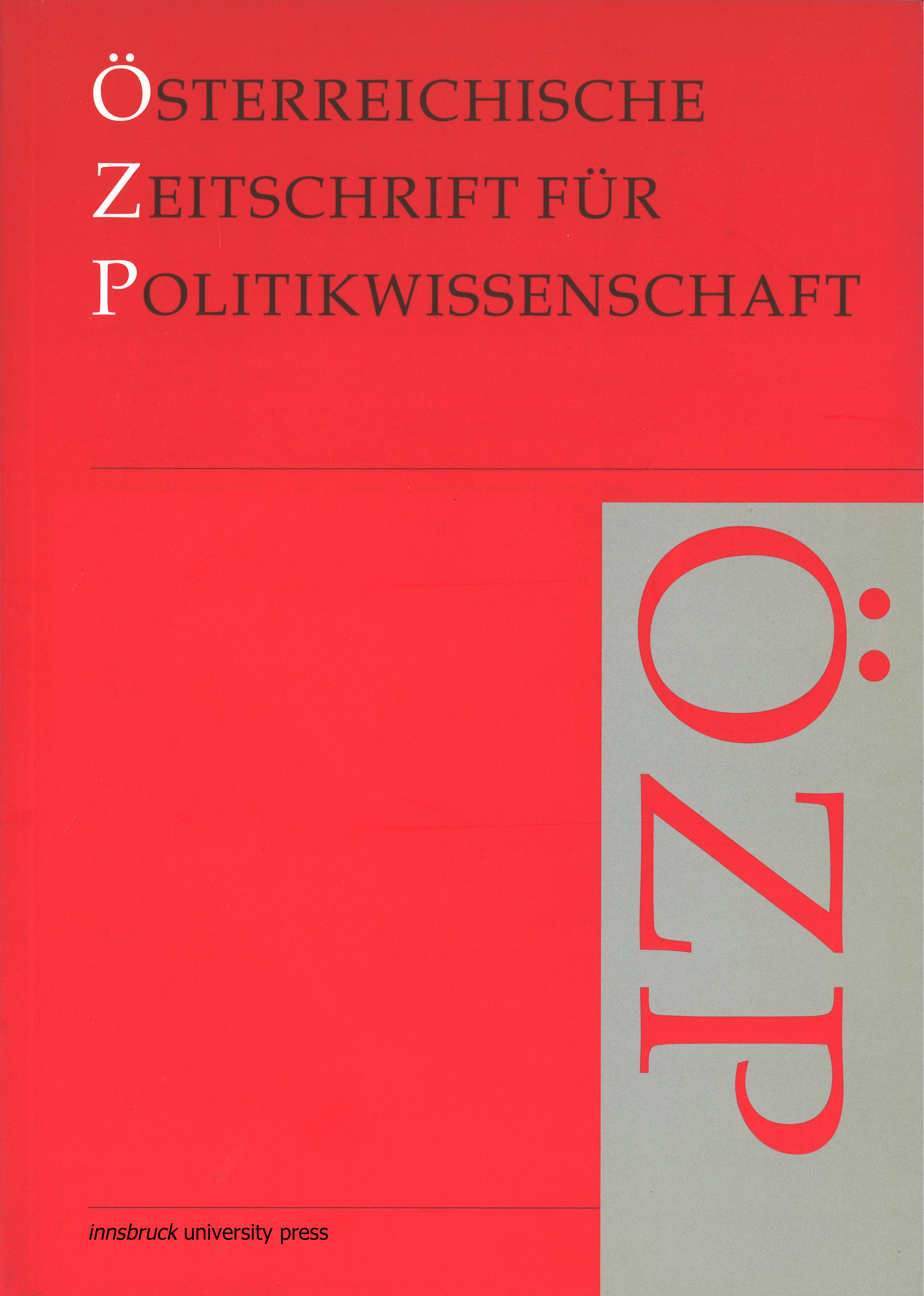Subregional co-operation in East-Central Europe: The Visegrád Group and the Central European Free Trade Agreement
DOI:
https://doi.org/10.15203/ozp.821.vol32iss1Abstract
Der Beitrag analysiert die Entwicklung, den gegenwärtigen Stand und die Zukunft der Visegrád- Gruppe, eines der erfolgreichsten Foren für subregionale Kooperation in Ostmitteleuropa. Das Fehlen formalisierter institutioneller Strukturen hat ein flexibles, für Änderungen offenes Arrangement hervorgebracht. Gleichzeitig war es damit anfällig für Störungen, die mit einer stärker institutionalisierten Struktur vermieden werden hätten können. Während das vorrangige Ziel in den 1990er Jahren darin bestanden hatte, das Erbe der Vergangenheit zu beseitigen, einen Beitrag zur Auflösung des Warschauer Paktes und zum Rückzug der sowjetischen Truppen aus der Region zu leisten sowie die Rückkehr der Länder nach Europa zu koordinieren, stehen heute die Integration in die EU, Hilfe bei der demokratischen Konsolidierung der Post-Meciar-Slowakei und pragmatische Zusammenarbeit in verschiedenen Bereichen im Vordergrund. Offen bleibt, ob die Gruppe nach einem EU-Beitritt noch Zukunft hat. Der Autor ist der Ansicht, dass sich das Zentraleuropäische Freihandelsabkommen nach der EU-Erweiterung erübrigen wird, während die Visegrád-Gruppe auch danach noch Restaufgaben zu erfüllen haben wird.Downloads
Ausgabe
Rubrik
Lizenz
The OZP is the authorized publication of the Österreichische Gesellschaft für Politikwissenschaft (ÖGPW, Austrian Political Science Association)
The author of an article (in case of multiple authors: the corresponding author, responsible for releasing this material on behalf of any and all co-authors) accepted to be published in the OZP hereby acknowledges the following Copyright Notice:
- The author retains the copyright to the article.
- It is the responsibility of the author, not of the OZP, to obtain permission to use any previously published and/or copyrighted material.
- Publication of a submitted text is dependent on positive results from the peer reviewing. In such a case, the OZP editors have the right to publish the text.
- In case of publication, the article will be assigned a DOI (digital object identifier) number.
- The author agrees to abide by an open access Creative Commons Attribution (CC BY-SA) license. The license permits any user to download, print out, extract, reuse, archive, and distribute the article under the same license, as long as appropriate credit is given to the author and source.
- The license ensures that the author’s article will be available as widely as possible and that the article can be included in any scientific archive. In order to facilitate distribution, the author agrees that the article, once published, will be submitted to various abstracting, indexing and archiving services as selected by the OZP.
- In addition, the author is encouraged to self-archive the article, once published, with reference to the place of the first publication.
- After the contribution appears in the OZP, it is still possible to publish it elsewhere with reference to the place of the first publication.
- The finished article, if published, will include a correspondence address (both postal and email) of the author.
- If written under the auspices of a grant from one or more funding agencies, such as FWF (Austrian Science Fund), ERC (European Research Council), and Horizon 2020 (EU Framework Programme), an article accepted for publication has to be deposited in an Open Access archive. The OZP’s archiving policy is compliant with these provisions. (In case the article derives on funding from a different source, the author is responsible to check compliance of provisions.)




